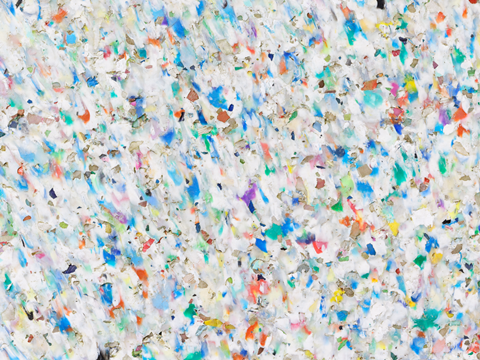
A report from Bain & Company asserts that 650 million metric tons of polyolefins must be chemically recycled globally to achieve cost parity with virgin plastic production in the next 20-30 years – identifying a ‘window of opportunity’ for European plastics companies to take leadership.
Apparently, recycling polyolefins in Europe is almost twice as expensive as producing virgin polyolefins; yet customer demand is price-sensitive and, right now, volumes are too scarce to generate significant cost benefits.
Bain & Company argues that, in a base case, European chemical recycling requires €400 billion in cumulative capex to compete with virgin plastics production. A cumulative cost premium of approximately €270 billion includes the sum of price premiums paid by customers, regulatory mechanisms, and margin investments from the value chain.
“Our analysis shows that chemical recycling could become competitive with virgin production once cumulative global volume reaches 650 million metric tons of polyolefins recycled through pyrolysis, assuming a virgin price of €1,250 per metric ton and depending on gate fees and broader market conditions,” said Mark Porter, head of Bain & Company’s global Chemicals practice. “This would take at least 20 to 30 years and by then recycled plastic would account for approximately 20-30% of total plastic demand.”
The report suggests that policy could help supply meet demand by gradually increasing recycled material blending requirements; it raises the example of national or regional blending mandates that increase chemical recycling market penetration by 1-2% every year, which it believes could bolster over 15% share of the plastics market by 2040.
“Moving the needle will require a systems approach with regulatory support,” Porter continued. “Once scale reaches critical mass, chemical recycling can transition from a subsidy-reliant push to a demand-driven pull. That inflection point could fundamentally shift the economics, turning chemical recycling into a competitive, market-driven solution.”
As the industry develops recycling technologies ranging from sorting to pre-treatment of waste, the report says that cost efficiencies could be unlocked with longer-term, maturing solutions and accumulated operational experience.
Bain & Company also outlines three strategies for plastics producers to take a leadership position in chemical recycling, the first being a proactive approach to collaborating with value chain partners and co-creating offtake opportunities.
This should coincide with preparations for long-term advantage, the report says, with the most proactive companies anticipated to ‘lock in’ premium waste streams and serve ‘high-value’ customers in a ‘virtuous cycle’ of scale and performance.
Secondly, companies are encouraged to collaborate with regulators to help shape policy levers that relate to their businesses. Public perception and dialogue surrounding the role of plastics should shift to acknowledge their performance and, when managed responsibly, their sustainability implications.
Bain & Company also recommends that producers be ‘willing to be flexible and rewrite their playbooks’ – i.e., think outside the box to test new business models, sourcing strategies, and partnerships.
“This could mean forming 10-year offtake agreements with dynamic pricing mechanisms,” the company says, “the kind of creative moves that may be invisible from the outside but lay the groundwork for future advantage.”
This development comes after a plateau in rigid HDPE and PP recycling in 2023 led Plastics Recyclers Europe to warn that the EU might miss the Packaging and Packaging Waste Regulation’s recycled content targets for 2030 by two million tonnes. This outcome is attributed in part to competition from imports, high inflation and energy costs, and a global oversupply of polyolefin.
Similarly, a study by CEFLEX and Ghent University identified ‘significant challenges’ in upscaling delamination, deinking, dissolution, and contaminant extraction technologies to meet the Packaging and Packaging Waste Regulation’s flexible plastic recycling and recycled content deadlines by 2030. In particular, they highlighted the targeted 55% recycling rate for flexible plastic packaging by 2035, with approximately 38% of existing flexible packaging structures said to contain multiple hard-to-recycle layers and materials.
A whitepaper from ICIS also indicates that mechanical recycling constituted 8% of demand in Europe, North America and North Asia in 2024. However, it anticipates that the figure is expected to double across various global regions by 2050, reaching an annual recycled production volume of over 50 million tonnes.
If you liked this story, you might also enjoy:
The ultimate guide to the Packaging and Packaging Waste Regulation in 2025
How are the top brands progressing on packaging sustainability?
Everything you need to know about global packaging sustainability regulation in 2025
The key to increasing the use of reusable packaging in supermarkets


















No comments yet